Let’s be honest; the mute swan can be a bit of a background bird. It is the common resident blocking your view of an unusual winter migrant on your local lake. It is rarely the star of any birdwatching show, easily dismissed for something flashier and more dynamic. But it appears that those of us who have overlooked the mute swan have been doing it a disservice.
The swan lover
Swan: Portrait of a Majestic Bird, from Mythical Meanings to the Modern Day by Dan Keel, opened my eyes to the often contradictory world of the mute swan. I wholeheartedly recommend this book, even if you don’t think swans are that interesting. Trust me; you will by the time you finish reading it. Dan delves into the swan in all its guises – lover, fighter and aviator – while dispelling the myths that surround this bird and the impacts that humans have on this species, both positive and negative.
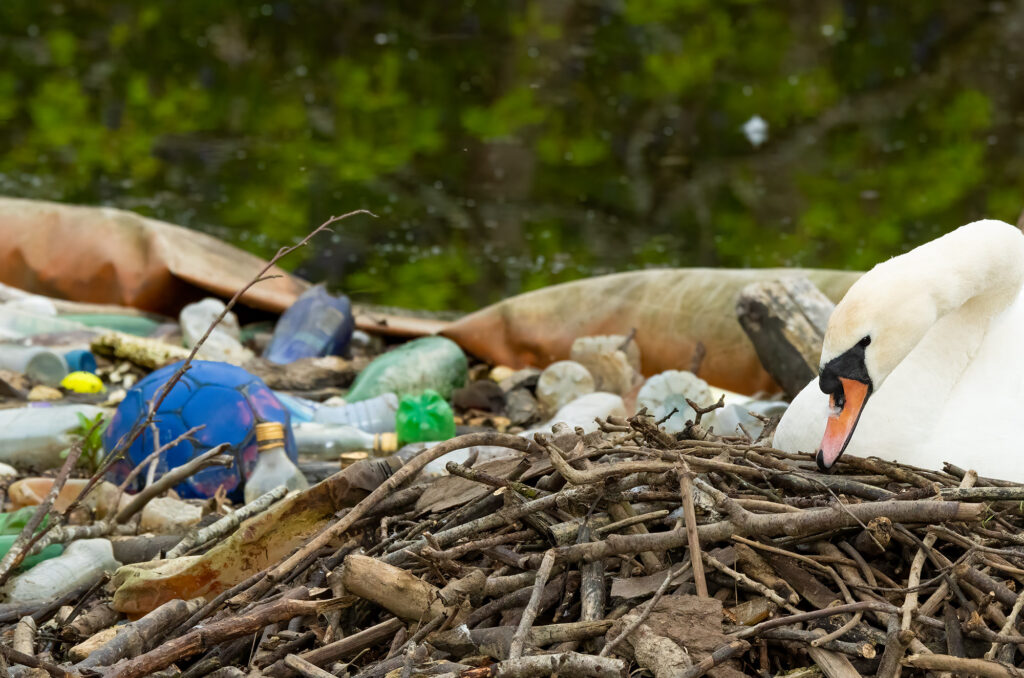
But this book is not just full of facts; it contains insights into both the personality of the swan and the author and reflects on the deep connections we can develop with the wildlife we watch.
The swan fighters
Coincidentally, a few days after finishing the book, my partner and I witnessed some unexpected swan behaviour on a walk around a local reservoir. The serene scene – of tufted ducks gently bobbing on the water as the cool breeze rippled the surface – was disturbed by a mix of whipped-up water and wingbeats. Partially obscured by a hedge, we spotted the white bodies flying past low to the water. When we reached a good vantage point, all seemed calm again.
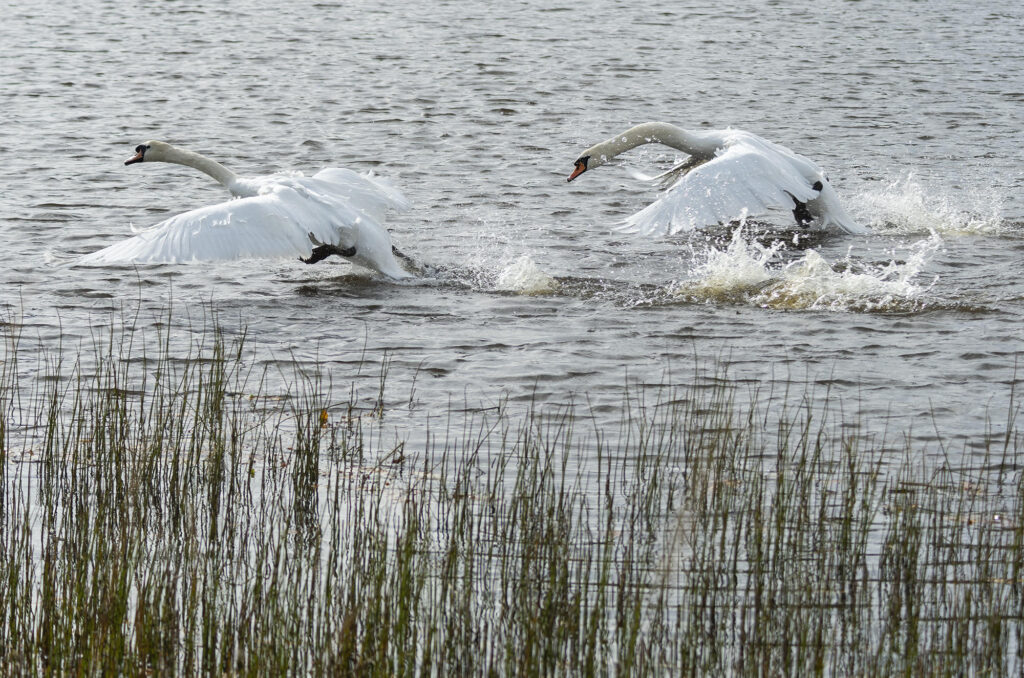
But, having read Dan’s book, it did not seem like this was the end of the commotion. I saw that the fighter that Dan had described was present on the small lake. The male (or cob) – I assume, based on the thickness of its neck – powered through the water, wings arched behind his folded-in neck, which created a menacing bow wave. His target was just ahead of him; another mute swan – slighter but a similar size.
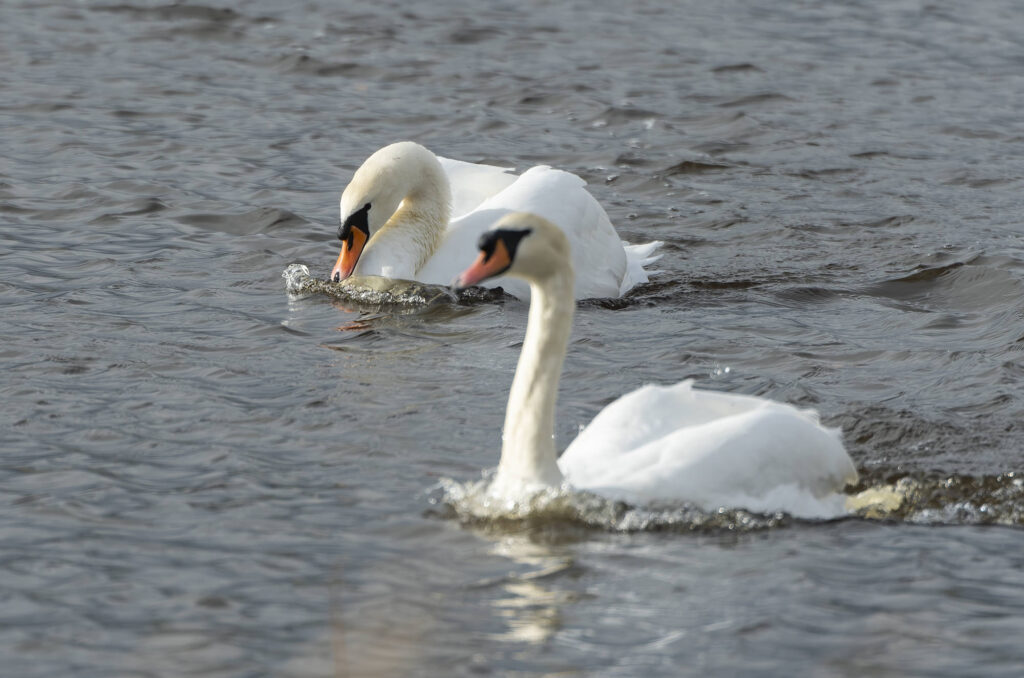
The behaviour that followed was like watching a video on repeat. The aggressor built up speed, gliding closer to his target and then launched an attack. Both birds lifted off and flew a short distance while the aggressive male snapped at the victim’s tail feathers and then landed back on the water before they resumed their positions and started the process again.
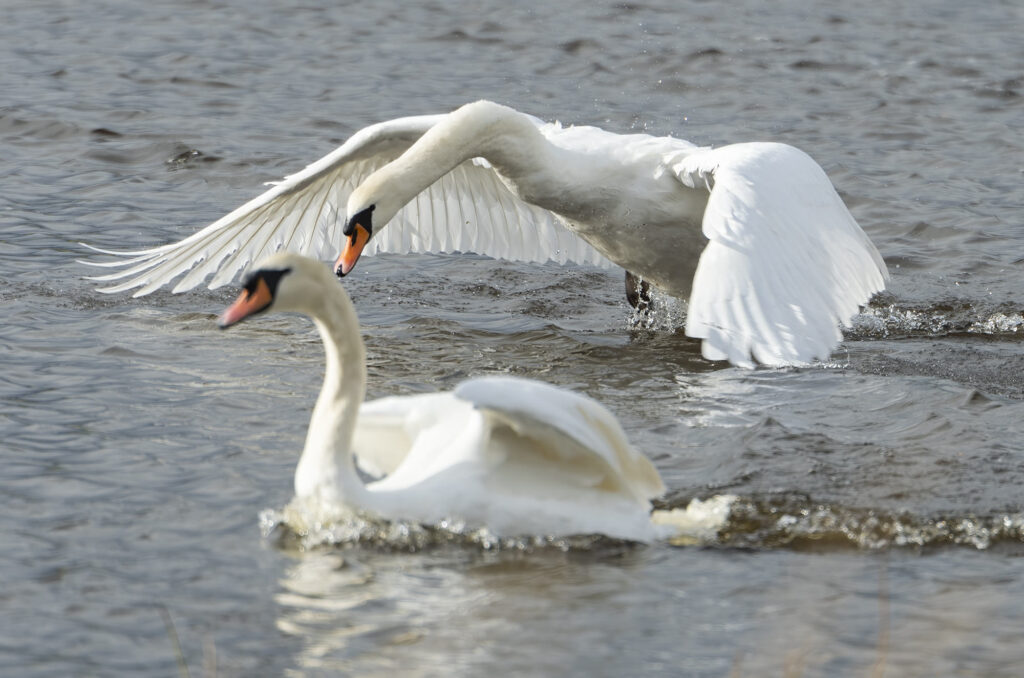
Paddling around the middle was, I assume, the female (or pen). She looked like a referee keeping score or the girlfriend of a guy involved in a punch-up outside a pub at kicking out time – hanging around to pick up the pieces when the fighting was over.
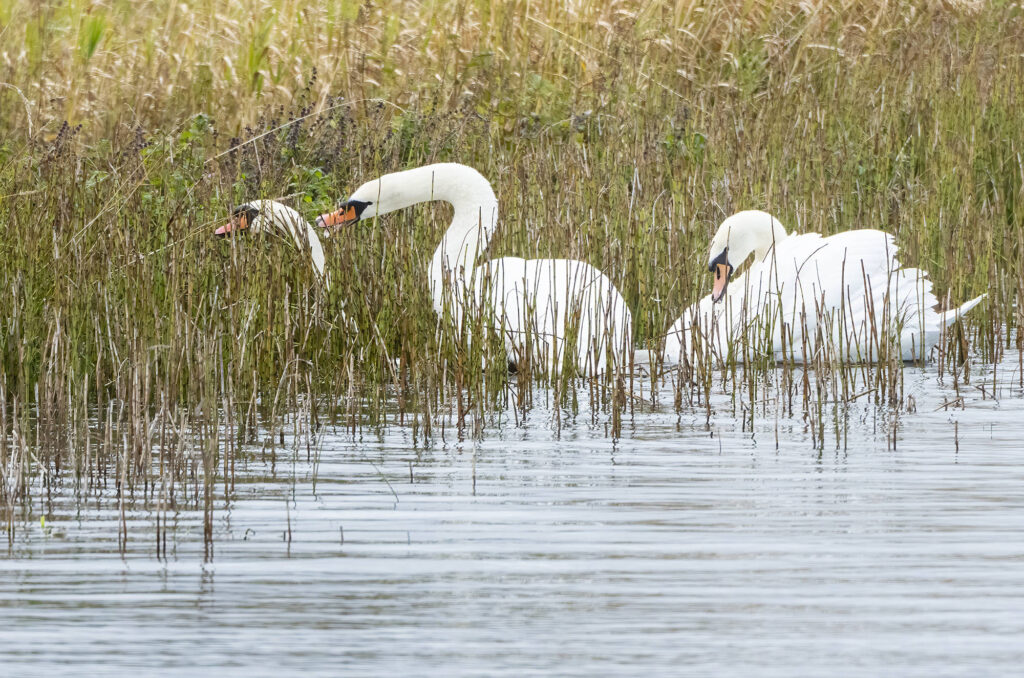
A couple standing next to us gasped in disbelief at what they were witnessing – the tranquillity of their walk broken by the most unusual suspects. “I’ve never seen swans do that”, was the repeated phrase as we all looked on in horror as the aggressor got hold of the victim’s neck in the reeds and attempted to drown it while the female watched.
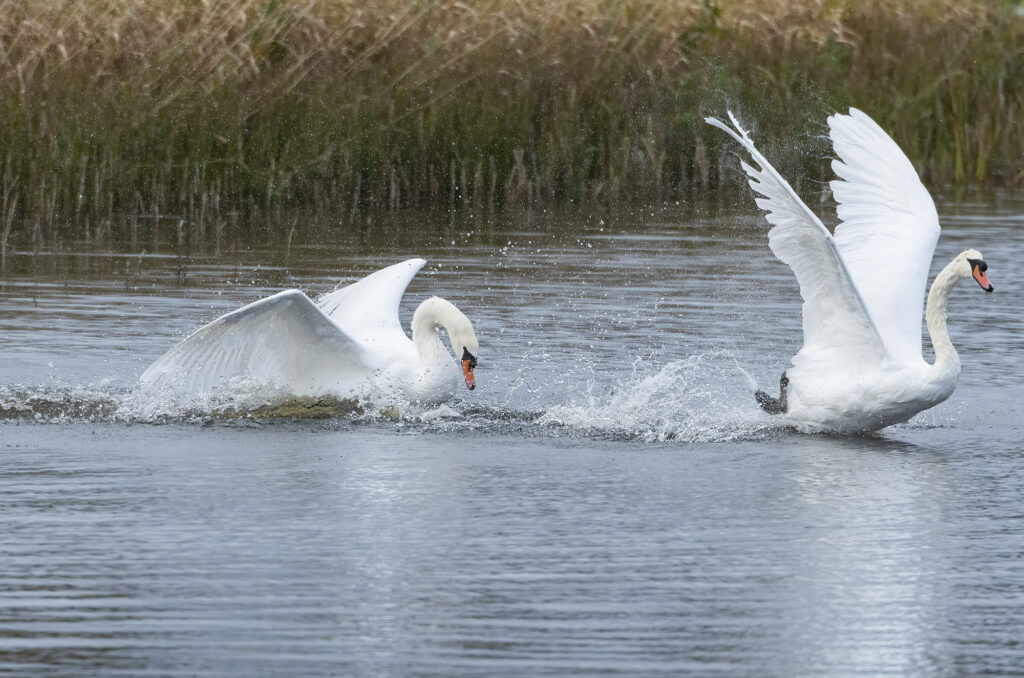
“They’re at it again then”. The voice behind us provided the perfect opportunity to look away as the victim broke free. The woman explained that they had been behaving like this for months. She also intervened when one of the three misfits attacked her dog just days before.
A contradictory character
I am still at a loss as to what was behind this display, which continued as the rain lashed down and we decided to head home. In his book, Dan notes that once the male swan “has secured a territory he will fight to the death to protect it”. Certainly, the ‘busking posture’, similar to a coiled cobra, and the seemingly attempted drowning would indicate that this male was getting rid of an intruder. However, the aggression had been going on for months – indicating that this was a half-hearted attempt at getting rid of the interloper. It couldn’t be parents evicting a cygnet from the family home as the victim was too old for that, which you can see from its full white plumage in the images. Maybe they are family members begrudgingly sharing a territory. Whatever was going on, it was certainly interesting to watch and much more animated swan behaviour than we are accustomed to.
Throughout Swan: Portrait of a Majestic Bird, from Mythical Meanings to the Modern Day, Dan points out that the mute swan is a bird of contradictions. It can feel like an extra – quietly participating in a British waterside scene – but, as my recent encounter proves, this strong and silent symbol of serenity can quickly become the star of the show.

